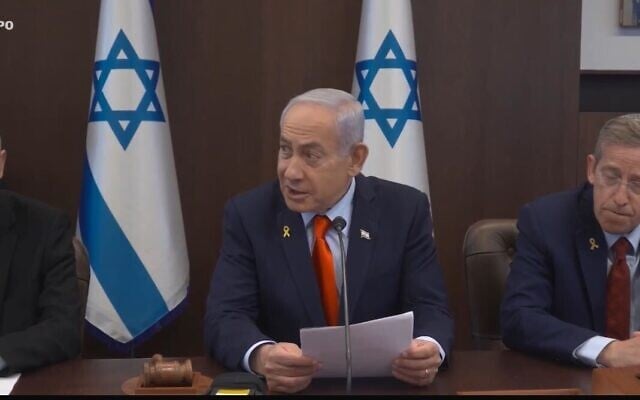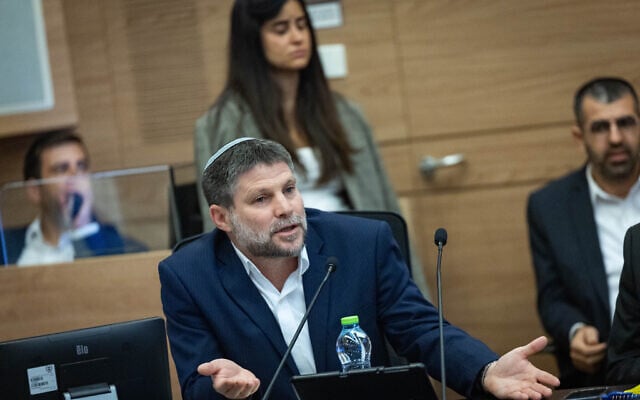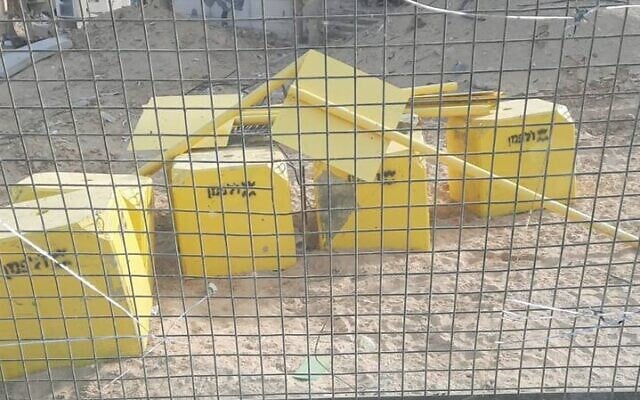Palestinian terror operatives launched an attack on Israeli forces in the Rafah area of the southern Gaza Strip on Sunday morning, the military said, prompting the Israel Defense Forces to launch strikes in response.
Israel blamed Hamas. However, the terror group said the incident occurred in an area under Israeli control, where they have had no contact with their operatives for months.
The IDF said the attack, which involved RPG and sniper fire by the terror operatives against Israeli troops, was “a blatant violation of the ceasefire agreement.”
The IDF “will respond forcefully,” the army added, after Prime Minister Benjamin Netanyahu and Defense Minister Israel Katz held a phone call with senior military officials to discuss a response.
The troops who came under attack had been operating on the eastern side of the Yellow Line — an area under IDF control in line with the ceasefire deal with Hamas — to destroy terror infrastructure in the area “in accordance with the agreement” with Hamas, the military said.
Immediately after the attacks, the IDF said, it carried out airstrikes with fighter jets and artillery shelling in Rafah to “remove threats,” during which several tunnels and buildings where terror operatives were spotted were destroyed.

Palestinian media also reported strikes near Deir al-Balah in central Gaza. According to an Israeli military source, more than 20 targets were struck as of Sunday afternoon.
Netanyahu had instructed the army “to take firm action against terror targets in the Gaza Strip,” while Katz said that “Hamas will learn today the hard way that the IDF is determined to protect its soldiers and to prevent any harm to them.”
“Hamas will pay a heavy price for any shooting and violation of the ceasefire, and if the message is not understood, the intensity of the responses will increase,” Katz warned.
Hamas, meanwhile, attempted to deny any responsibility for the attack, claiming that “communication has been cut off” with its operatives in the zones under Israeli control since the resumption of fighting in March.
“We have no connection to any events taking place in those areas and cannot communicate with any of our fighters there if any of them are still alive,” the terror group’s military wing said.
Following the attack, senior Hamas official Izzat al-Risheq issued a statement saying the terror group was committed to the ceasefire, insisting that “it is the occupation that continues to violate the ceasefire and provide excuses for its crimes.”
“Netanyahu’s attempt to evade his commitments is happening under pressure from his coalition of terror, as he seeks to escape responsibility before the mediators” regarding the ceasefire agreement, al-Risheq said.
בעקבות הפרה חמורה של הפסקת האש, חיל האוויר תקף ברפיח
צילום: TPS
— איתי בלומנטל ???????? Itay Blumental (@ItayBlumental) October 19, 2025
Meanwhile, some media outlets affiliated with Hamas in Gaza claimed that the attack carried out by the terror group in eastern Rafah was intended to target Yasser Abu Shabab, the leader of a militia operating with Israeli support in the area.
The militia is located in a zone that is under Israeli control according to the ceasefire agreement.
On Friday, several terror operatives emerged from a tunnel in the Rafah area and opened fire on Israeli troops, according to the IDF, with no injuries caused in that incident.
In another incident on Friday, the IDF said it carried out an airstrike against a group of terror operatives who emerged from a tunnel and approached troops in southern Gaza’s Khan Younis.
Far-right ministers call for return to war
Finance Minister Bezalel Smotrich called for renewed war in the Gaza Strip after terror operatives violated the ceasefire by firing on IDF troops.
“War!” the far-right politician wrote in a one-word post on social platform X.
Smotrich voted against the ceasefire deal in the cabinet and has previously argued that after the return of the hostages, Israel should “continue to strive with all its might for the real eradication of Hamas and the real demilitarization of Gaza so that it no longer poses a threat to Israel.”

National Security Minister Itamar Ben Gvir also publicly urged Netanyahu to resume military operations in the Gaza Strip.
“I call on the prime minister to order the IDF to renew full-scale fighting in the Strip at full strength,” the far-right politician said in a statement. “The false belief that Hamas will change its ways, or will even abide by the agreement it signed, is proving, unsurprisingly, to be dangerous to our security. This Nazi terrorist organization must be destroyed completely, and the sooner the better.”
Meanwhile, hawkish opposition politician Avigdor Liberman declared that “the only response to terror and to Hamas is power. Strength. An Iron Wall.”
IDF demarcates ‘Yellow Line’ with concrete
The IDF on Sunday began to demarcate the so-called Yellow Line — to which the military withdrew under the terms of the current ceasefire — in the Gaza Strip with physical markers.
An image from Gaza that was posted to social media showed concrete blocks painted yellow and yellow metal signs that are to be attached to them.
On Friday, Katz ordered the physical markers so that the boundaries of the military’s control in the Strip are clearly visible.
He said the markers would serve as a warning to “Hamas terrorists and Gaza residents that any violation or attempt to cross the line will be met with fire.”
The IDF has killed several Palestinians in recent days, saying that they crossed the Yellow Line and posed a threat to Israeli troops.
The Yellow Line, as drawn by mediators, encompasses over half of the Strip’s territory, or 53%, most of which is outside of urban areas. In reality, the IDF is not holding all of that territory with ground troops, with many of its posts positioned closer to the Israeli border.

With the bodies of two hostages returned to Israel late Saturday, the number of bodies of captives still held in the Strip now stands at 16, out of the 28 that were there at the start of the current ceasefire.
The hostage deal reached earlier this month required Hamas to release the remaining 20 living hostages and the deceased hostages accessible to it within 72 hours of Israel’s October 10 withdrawal to the so-called Yellow Line inside Gaza.
In exchange, Israel has released nearly 2,000 Palestinian security prisoners and detainees, including 250 terror convicts serving life terms, plus the bodies of 15 Palestinians for every dead hostage returned from Gaza.
Hamas has said it would require additional machinery to locate the remaining deceased hostages. Israel has accused Hamas of lying, saying it can return almost all of the bodies.

